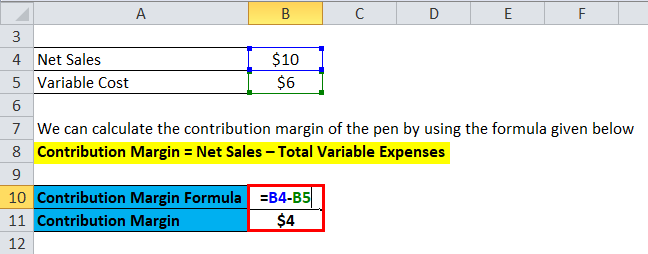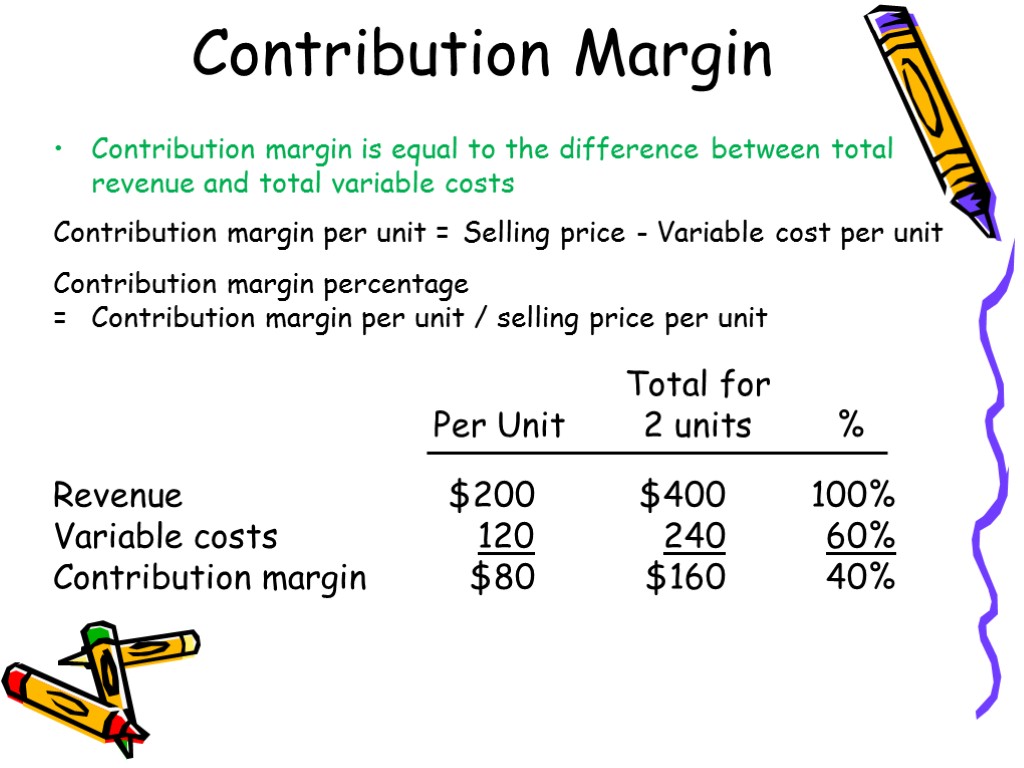
Other financial metrics related to the Contribution Margin Ratio include the gross margin ratio, operating margin ratio, and net profit margin ratio. These ratios users of accounting information internal external examples provide insight into the overall profitability of a business from different perspectives. The contribution margin may also be expressed as a percentage of sales.
Which of these is most important for your financial advisor to have?

Dobson Books Company sells textbook sets to primary and high schools. In the past year, he sold $200,000 worth of textbook sets that had a total variable cost of $80,000. Thus, Dobson Books Company suffered a loss of $30,000 during the previous year. This means that $15 is the remaining profit that you can use to cover the fixed cost of manufacturing umbrellas. Also, you can use the contribution per unit formula to determine the selling price of each umbrella. That is, fixed costs remain unaffected even if there is no production during a particular period.
What is the difference between the contribution margin ratio and contribution margin per unit?
Calculating your contribution margin helps you find valuable business solutions through decision-support analysis. Further, it is impossible for you to determine the number of units that you must sell to cover all your costs or generate profit. This is because the breakeven point indicates whether your company can cover its fixed cost without any additional funding from outside financiers. The Contribution Margin Calculator is an online tool that allows you to calculate contribution margin. You can use the contribution margin calculator using either actual units sold or the projected units to be sold. The following are the steps to calculate the contribution margin for your business.
The Evolution of Cost-Volume-Profit Relationships
That is it does not include any deductions like sales return and allowances. Thus, the total variable cost of producing 1 packet of whole wheat bread is as follows. The Beta Company’s contribution margin for the year was 34 percent. This means that, for every dollar of sales, after the costs that were directly related to the sales were subtracted, 34 cents remained to contribute toward paying for the indirect (fixed) costs and later for profit.
How confident are you in your long term financial plan?
- Calculating contribution margin (the difference between sales revenue and variable costs) is an effective financial analysis tool for making strategic business decisions.
- Further, it also helps in determining profit generated through selling your products.
- It’s an important metric that compares a company’s overall profit to its sales.
- By multiplying the total actual or forecast sales volume in units for the baseball product, you can calculate sales revenue, variable costs, and contribution margin in dollars for the product in dollars.
Net sales are basically total sales less any returns or allowances. This is the net amount that the company expects to receive from its total sales. Some income statements report net sales as the only sales figure, while others actually report total sales and make deductions for returns and allowances. Either way, this number will be reported at the top of the income statement.
How is It Helpful to a Business?
All such information is provided solely for convenience purposes only and all users thereof should be guided accordingly. As of Year 0, the first year of our projections, our hypothetical company has the following financials. Investopedia contributors come from a range of backgrounds, and over 25 years there have been thousands of expert writers and editors who have contributed. Shaun Conrad is a Certified Public Accountant and CPA exam expert with a passion for teaching. After almost a decade of experience in public accounting, he created MyAccountingCourse.com to help people learn accounting & finance, pass the CPA exam, and start their career.
It is considered a managerial ratio because companies rarely report margins to the public. Instead, management uses this calculation to help improve internal procedures in the production process. The contribution margin is the leftover revenue after variable costs have been covered and it is used to contribute to fixed costs. If the fixed costs have also been paid, the remaining revenue is profit. You can calculate the contribution margin by subtracting the direct variable costs from the sales revenue.
The CVP relationships of many organizations have become more complex recently because many labor-intensive jobs have been replaced by or supplemented with technology, changing both fixed and variable costs. For those organizations that are still labor-intensive, the labor costs tend to be variable costs, since at higher levels of activity there will be a demand for more labor usage. The first step to calculate the contribution margin is to determine the net sales of your business. Net sales refer to the total revenue your business generates as a result of selling its goods or services.